Events
Events
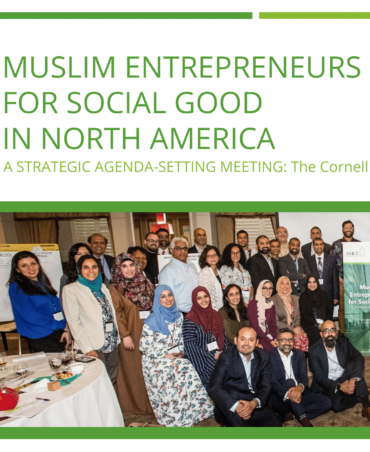
AMCC 2018
Muslim entrepreneurs in North America can be a force of good for their communities, while providing economic benefits to the company and its employees.
AMCC and DinarStandard have been at the forefront of driving the conversation and agenda around American Muslim entrepreneurship forward. We believe now is the time to shift the conversation from “what we need” to “what we can offer”, on Muslims being significant contributors to the wider economy and how we can work collectively with mainstream companies to promote an ethical market economy. It’s a key opportunity to direct our own narrative.
In the last decade, we have come to understand and serve the American Muslim consumer market, and have gone from virtually seeing no awareness of Halal to Halal being available in mainstream contexts, including playing a major role in Halal product exports. The thriving ‘Halal’ economy is now poised to contribute to not only Muslim consumers’ unique needs but address the wider ethical and sustainable economy needs worldwide.
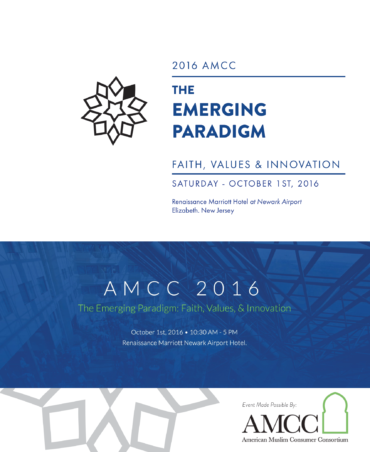
AMCC 2016
Just, equitable and healthy business practices serve as a central theme of Islamic values driven economic principles. Emerging paradigm of how faith and values are driving consumer behavior. There is a universal demand for a fair and just financial system. Mainstream finance is also gradually incorporating responsible principles and governance into decision making.
How responsible and ethical consumers can demand products and services which are socially responsible and how to ensure that their investments are in ethical asset instruments?
American Muslims will make increasingly significant contributions through their entrepreneurial and commercial activities. A new generation with fresh ideas about business, media, trade and finance will bring a new vision, nurtured by their faith, and forged by the needs and realities of life in America. We see an emerging paradigm of how faith and values are driving consumer behaviour and how entrepreneurs are launching innovative products to serve this market. Just, equitable and healthy business practices serve as a central theme and have universal appeal

AMCC 2014
Just, equitable and healthy business practices serve as a central theme of Islamic values driven economic principles. With a national movement around social entrepreneurship, what unique role can American Muslim entrepreneurs play in this context in relation to Muslim entrepreneurs globally?
What are some success stories or benchmarks from other communities? What specific areas or sectors should American Muslim social entrepreneurs pursue? How can the Halal food and Islamic finance sectors in America fully live up to its social relevance?
Muslim consumers are starting to become part of main-stream marketing (e.g. Coke ad in Super-bowl, Macy’s Ramadan promotion, Muslim super girl in Marvel comics, introduction of modest sensibilities at New York Fashion Week by a Muslim designers, Launch of nail polish suitable for Muslim women by Inglot in New York –O2M, Halal burger franchise – Elevation Burger, etc.)
It’s young demographic, diverse ethnic makeup and now with a significant second-generation population is also evolving into a unique American Muslim identity navigating various challenges and opportunities.
How unique are American Muslims consumption needs? Are they significant enough? What is their unique current/potential role in the developing American marketing/cultural landscape?
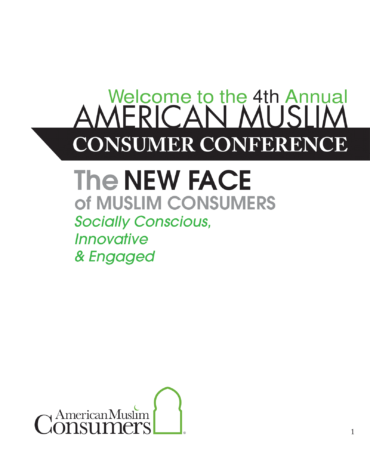
AMCC 2012
A major dynamic of the American Muslim market is the challenge and opportunity in its vast geographic fragmentation. The biggest population centers are dispersed around the country. While this may seem as a daunting logistical challenge for upstarts and entrepreneurs who are looking to serve primarily the American Muslim market, it is an enormous untapped opportunity for well-established brands, retailers and industry stalwarts.
The Muslim identity of American Muslims is an increasingly important part of their identity (as confirmed by Gallup Poll, Pew and other studies) that ties this diverse market from coast-to-coast. However, as with any market, the American Muslim market also has multiple dimensions to their identity that affects how they consume media, products and services.
This includes their general American identity and affiliations, their professional identity and affiliations, as well as their ethnic identity and affiliations.
This ethnic and indigenous national identity and subsequent affiliations of the American Muslim market is the major market dynamic today. In order to have the widest reach and most effective engagement with the American Muslim market, it is of paramount importance to understand the strong role of the ethnic and indigenous sub-clusters that exist today within the American Muslim market – as well as the impact of immigration cycle on their consumer behavior, channels of consumption, and preferences.
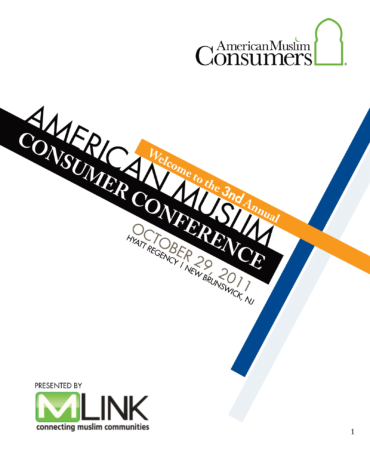
AMCC 2011
American Muslims are a large, diverse, and growing segment of the American population with unique needs and consumption habits. They provide marketers – mainstream and niche – tremendous opportunities. However, for marketers it all starts from understanding how large is the market for them?
The Muslim identity of American Muslims is an increasingly important part of their identity (as confirmed by Gallup Poll, Pew and other studies) that ties this diverse market from coast-to-coast. However, as with any market, the American Muslim market also has multiple dimensions to their identity that affects how they consume media, products and services. This includes their general American identity and affiliations, their professional identity and affiliations, as well as their ethnic identity and affiliations.
This market’s ethnic and indigenous identity and associated affiliations is the second major market dynamic today. In order to have the widest reach and engagement with the American Muslim market, it is key to understand the strong role of the ethnic and indigenous sub-clusters that exist today within the American Muslim market as well as the impact of immigration cycle on consumer behavior, channels and preferences.
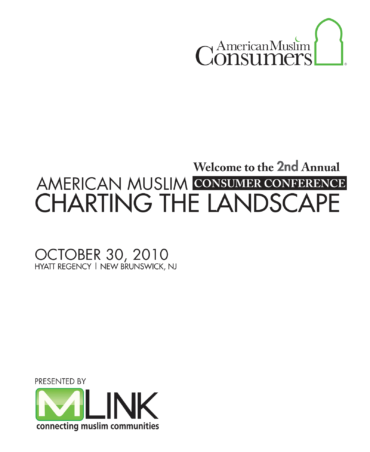
AMCC 2010
American Muslim Consumers’ annual expenditure in 2008 is estimated to have been $97 billion. This is based on a conservative DinarStandard estimate of a 6 million American Muslim population (with an average household unit size of 3.13) and applying the US average annual house-hold expenditure to American Muslims*.
As enticing as this large market is, it is important to first understand the various product categories and their uniqueness to Muslim needs. This consumer landscape can be broken-down into two key categories.
- All consumer products and services that a Muslim household spends on, that are not unique for Muslim consumers and
- Products & services that are customized for Muslim consumer unique needs.
The first category is where marketing focus is needed on custom communication, targeted media reach and building loyalty. The second category is where customized Muslim products/service or dedicated business lines are developed.
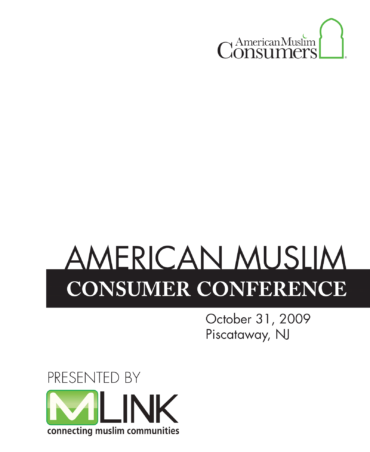
AMCC 2009
American Muslim Consumers have long been researched and talked about in the mainstream media, and without exception the tone of this research has been positive and exciting!
What was lacking was the active community involvement in translating these messages into action. By establishing a platform, we feel, the conversation can be carried forward together with community leaders, entrepreneurs, corporations, and marketing/ advertising professionals. This conference focused on the scope, trends, and opportunities behind this vast, largely untapped potential of the American Muslim Consumer market.
A decade ago, much was written about the Hispanic market and it was also lost in the mainstream media without any action until early 2000. At this time the ethnic market started to reach a sizeable opportunity for companies to target and today this market stands at $1.4Trillion.
American Muslim Consumers today stand at $170Billion and this is expected to grow rapidly as the population expands and younger Muslims start working.

